[Life Cycle]
Left unfinished by the Canley works, this Triumph Dolomite Sprint was destined for obscurity until an exciting new life beckoned over the border
Words JON BURGESS Photography TOM CRITCHELL
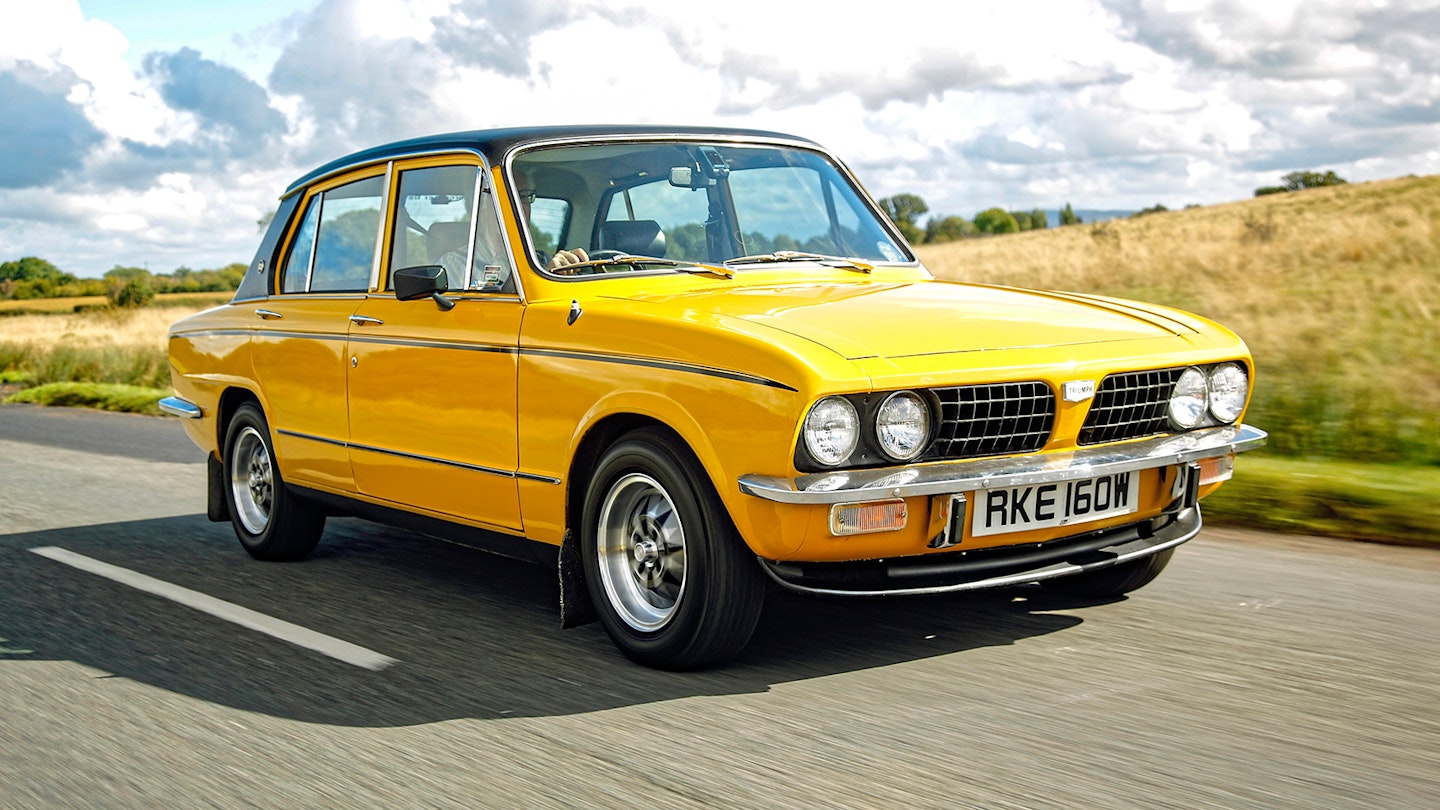
Yellow fever: this Triumph Dolomite has truly won over its single owner
March 1981 – RKE 160W bought by Rob Jones
Rob Jones can be described as a Dolomite Sprint fan, and dealer chain Caffyns Ltd has been a useful ally. Its Sevenoaks, Kent branch sold him his second fast Dolomite, RFN 216S, in Brooklands Green. ‘That was a lovely car, and followed a Carmine Red Sprint, XPA 343N, and a twin-cam Lotus Seven S4 that eventually proved impractical for use as an everyday car.’
Working offshore and not long married, Rob was on leave in early 1981, when he and new wife Veronica were visiting his parents in Kent. ‘I walked past Caffyns and saw this Inca Yellow Dolomite Sprint right at the far back of the showroom – there were no ‘for sale’ signs on it, no registration plates; and it was obviously quite dusty. I immediately thought, “What the hell's that doing there?”
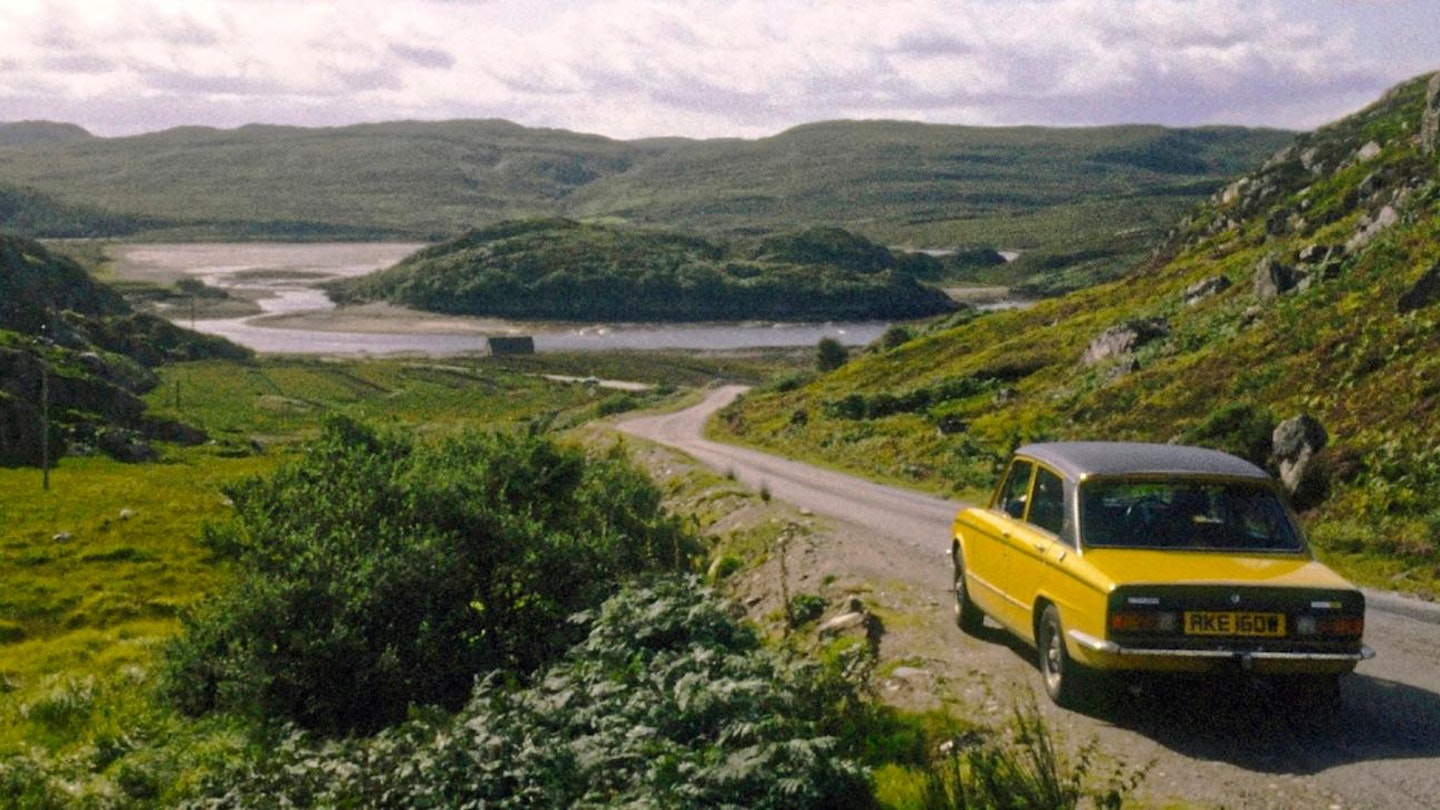
1982 Touring in the Highlands, one of many trips

1988 Rear seatbelts installed with arrival of daughter Helen
‘I went back in on the Monday and the salesman said, “We can't sell it. We've Ziebarted it and knocked money off, but nobody wants it.” Initially, he batted off any further talk of doing a deal but then asked me if I was interested. I told him that if he would be prepared to take my S-reg Sprint as a part exchange, then, yes, I would be. I offered him around £1000 less than the asking price, and he looked a bit doubtful. I said, “That's it – that's the price I'll give you as well as the green Sprint. Take it or leave it.”’
Rob and Veronica had recently moved from North Wales to Glasgow for Rob’s new job – and they needed to get home. ‘I told the salesman that I was staying at my parents’ house until one o 'clock that day, and then Veronica and I were going back to Glasgow. If he called me on my parents’ telephone number before one o'clock, he had a deal. After lunch, at about quarter to one, the phone rang.’ Rob’s brinkmanship had worked – and got him into a late Sprint; his green Dolomite, RFN 216S, was part exchanged for £2000, reducing the balance due to be paid on the Inca Yellow car to £4068.50.

Rob (right) explains Dolly has needed little maintenance
A clean and a pre-delivery inspection later, the keys to RKE 160W were in Rob’s hand. Curiously, though there was just a single set – Caffyns had to cut a second set, because the factory supplied items were absolutely nowhere to be found.
‘This car was registered in April 1981, although it was built in August 1979 according to the British Motor Industry Heritage Trust build certificate. It had been in the factory for a while and the rest of the time it had seemingly been knocking around various Caffyns or Wadham Stringer dealerships in Kent, and nobody could get rid of it. Sprints were considered old-fashioned then. It was not a new-fangled hot hatch, the once-contemporary Michelotti styling was considered dated and everybody wanted black plastic trim; they didn't want chrome anymore.’
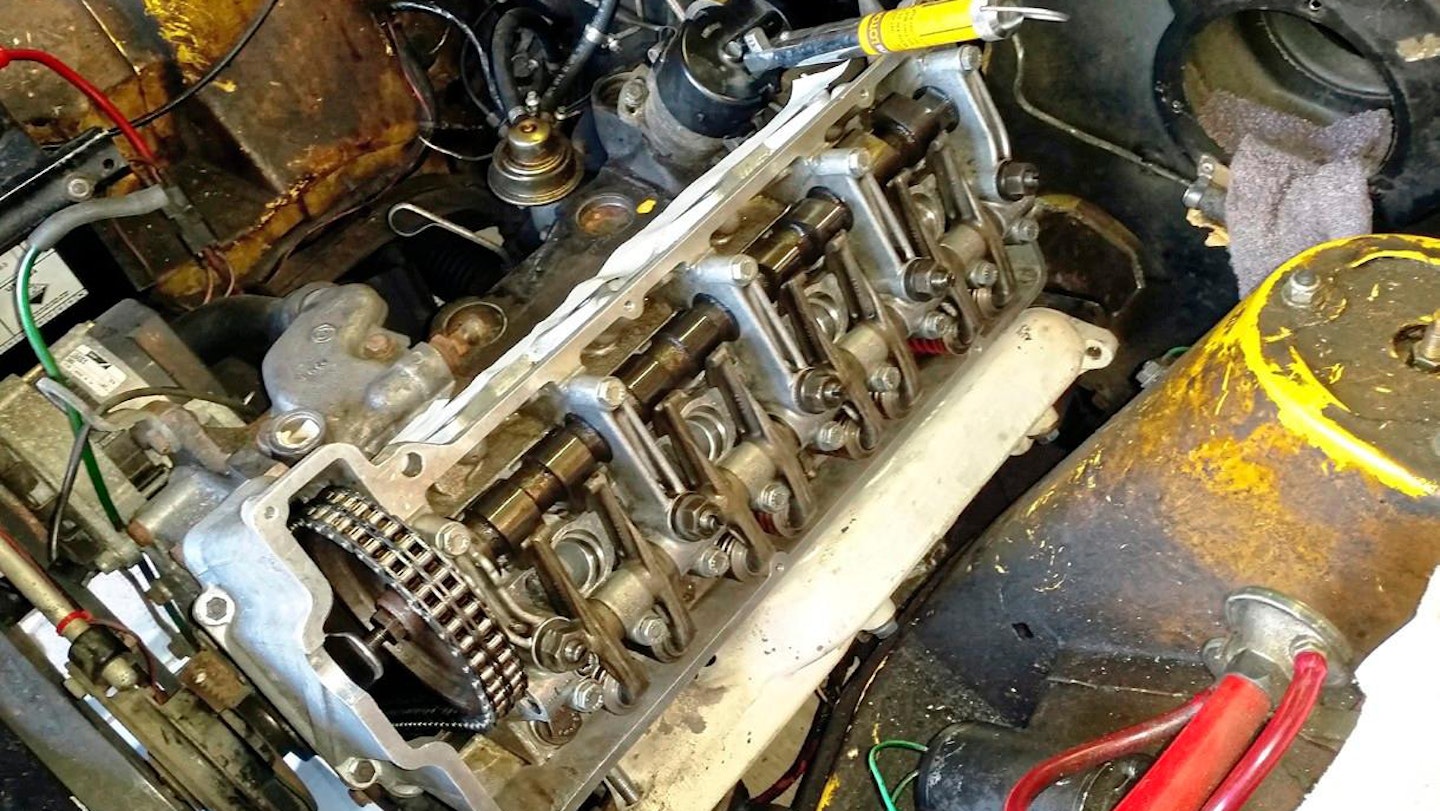
2016 Worn valve guide seals necessitated engine overhaul
Black plastic trim or not, never let it be said that Sprint ownership was mundane. Following a faultless trip back to Glasgow, an alarming problem reared its head – the factory at Canley hadn’t finished welding the bodyshell together. ‘As soon as I got it home, I found the passenger side back door just wouldn't close. If I lifted the handle, the door would shut, and I realised that it was because the B-pillar was only welded to the body at the bottom!
‘I called Caffyns. I’m not sure the staff believed me, but they seemed quite shocked. Caffyns was also a Rolls-Royce dealership, and had a bloke who did the welding on its cars. He welded it up; the weld itself is of beautiful quality, but the workshop just put some touch-up paint on it without any primer. There were two spot welds added with a bead weld around the top of the B-post – it's been fine ever since, although the touch-up paint has come off part of the bead weld. I've just left that as a memento.’
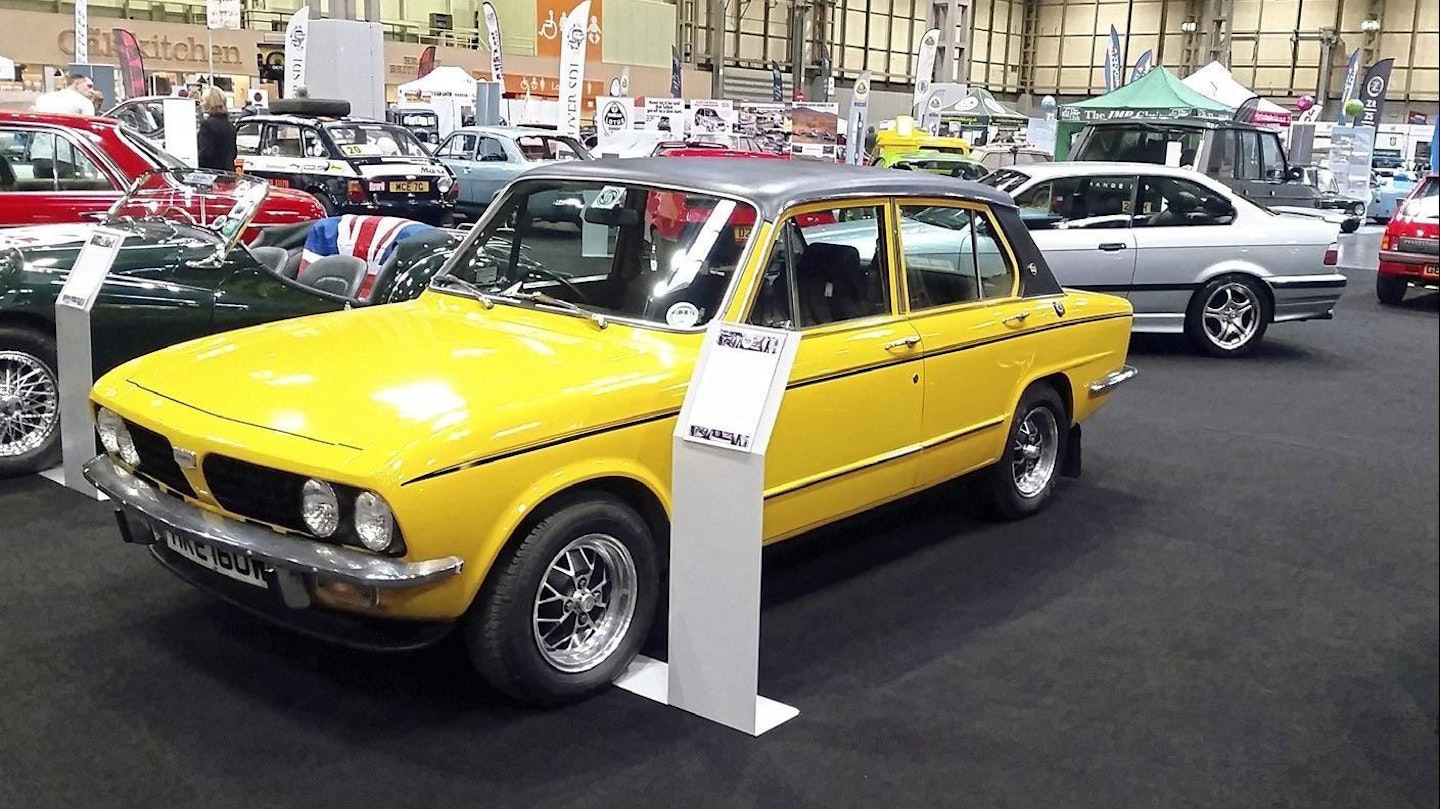
2018 Pride of Ownership stand at NEC Classic Motor Show
Rob isn’t certain why his Sprint spent so long at the factory, but research – and conversations with former Triumph staff – revealed much. ‘I think it must have had quite a bit of rectification. I don't know how much of it was at the factory and how much was carried out at the dealer, but on the right-hand side rear bumper where it goes around the corner and along the side of the car, there's been yellow overspray underneath ever since I've had the car, and the paint itself is actually pretty terrible overall!
As Rob and Veronica settled into their new life in Scotland, the Sprint, now their everyday car, went from the bucolic splendour of North Wales to malaise-era Glasgow, punctuated by trips every other month to Manchester, to see Veronica’s family.

Rob’s dutiful care has led to most original car award
‘Glasgow in the Eighties was a desperate city. The local kids’ idea of fun was pushing drunks into the traffic, particularly on a Friday night. We found the original Leyland horns were not very loud, so I bought a set of Harry Moss Maserati air horns – that improved matters considerably.’
Between 1982 and 1983, the Sprint racked up miles touring around Scotland, tackling what would eventually become the North Coast 500. ‘It rained every day and when we got back to Glasgow, there were mushrooms growing on the carpet behind the front seats. This Sprint was driven a lot in Scotland, but it wasn’t the ideal daily to take to work.’

Club member’s modern-day historic racer built for road, trackday and hillclimb use
Nor was what Rob found in 1984, when a sidelight bulb popped. Remember the dealer had to cut another set of keys? ‘I unscrewed the light cover from the outside and this lump of masking tape dropped out. Inside was the other set of keys. I was talking to my next-door neighbour at the time, and his cousin was in the traffic police. He said, “We know about that – there was quite a scandal because the transporter drivers were taking one of the sets of keys, hiding them somewhere on the outside of the car. They'd know which garage they'd delivered the car to, then they'd be in touch with their friends who stole cars, telling them where they could find the keys. They'd then go and steal it because they could just unscrew the light or whatever to find where the keys were hiding, take them and drive the car away.”
‘My Sprint escaped because this car went to Glasgow and it had been bought in Kent, so they either didn't have contacts in Glasgow, it was too far, or the gang had been broken up, but I got away with it.’ A 1966 Morris 1100 Estate then took the strain off the Sprint for a while. Bought for £70, it attracted a very different kind of attention from the police. ‘They thought the Morris was definitely IRA material.’
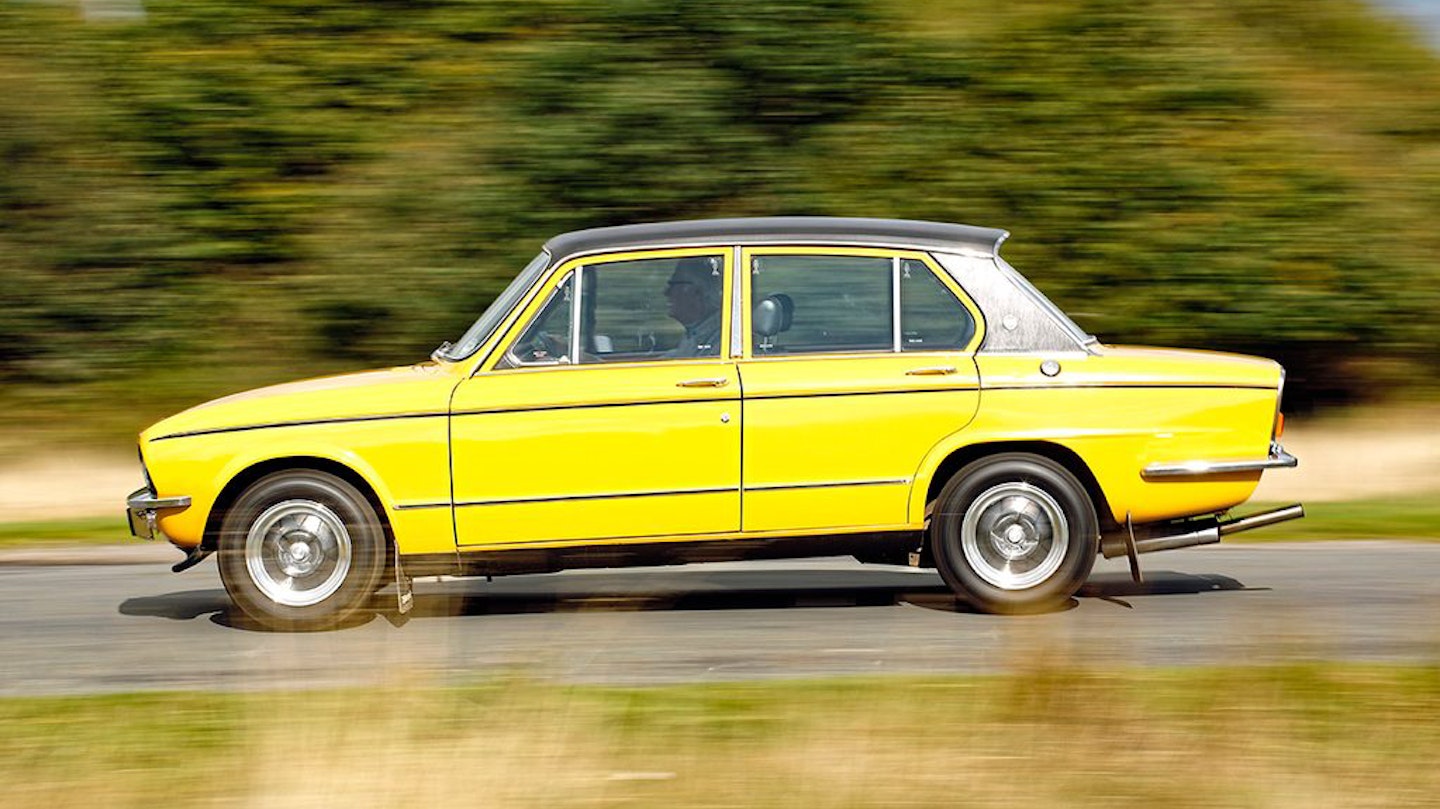
‘I unscrewed the light cover and a lump of masking tape dropped out – inside was the other set of keys’
Not that Rob’s Sprint was off the hook just yet. ‘Towards the end of our time in Glasgow, we'd taken it into work. We came back one night, and it was sat on bricks, with the wheels still on it. Beside each wheel were three-wheel nuts, with the locking wheel nut still attached. They were weird locking wheel nuts; they used a magnetic fob with the magnets arranged in a particular pattern.’ Their oddity saved the Sprint on that occasion. Rob later replaced them, then had the wheels refurbished in 2022.
In 1985, both a new job and garage beckoned. This Dolomite had received a replacement overdrive at Macharg Rennie & Lindsay in Scotland, and the viscous fan was removed at the same time. Rob also joined Club Triumph’s Dolomite Register. ‘I was member number 21, and that has evolved into the Triumph Dolomite Club, where I'm number 42 for some reason. I've been with that since it started. I've still got issue one of the Dolomite Sprint News.’

Interior shows few signs of wear for five decades of use
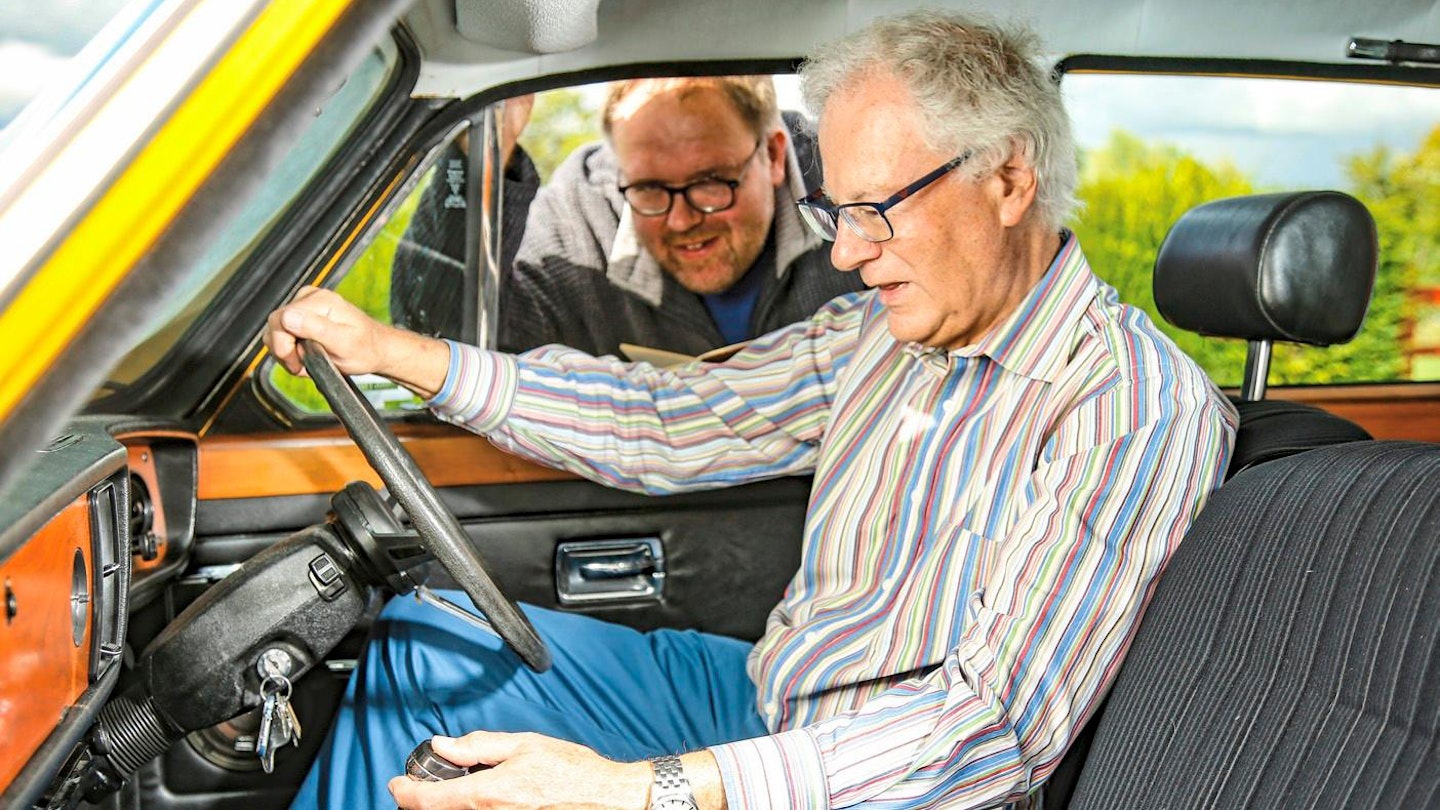
Whether daily car or tourer, Sprint holds happy memories
While waiting for a company car, Rob expensed trips in the Sprint, and replaced the original exhaust, which had rotted through. A clonk began emanating from the rear axle; on disassembly, it turned out that the car had a Salisbury limited-slip differential fitted. ‘It was supposed to be an option that put either a prefix or a suffix on the VIN number, but clearly they just chucked whatever they'd got in the factory on, and it didn’t appear on the build sheet.’ Four decades later, a Blackline Quaife-style diff’, described by Rob as more progressive, finally replaced the Salisbury.
When Helen, Rob and Veronica’s second child was born in late 1988, Ron fitted rear seatbelts, and the Sprint became a proper family car. Work meant more relocation, first to Yemen, then to the Netherlands, later to Bangladesh. Through the Nineties, company cars came and went, but the Sprint remained safe in the northwest of England. ‘It stayed in Veronica's uncle’s garage from 1990-1997; he used to start it and drive it in and out to keep everything moving.’

2018 Delamination of windscreen caused by this bolt!
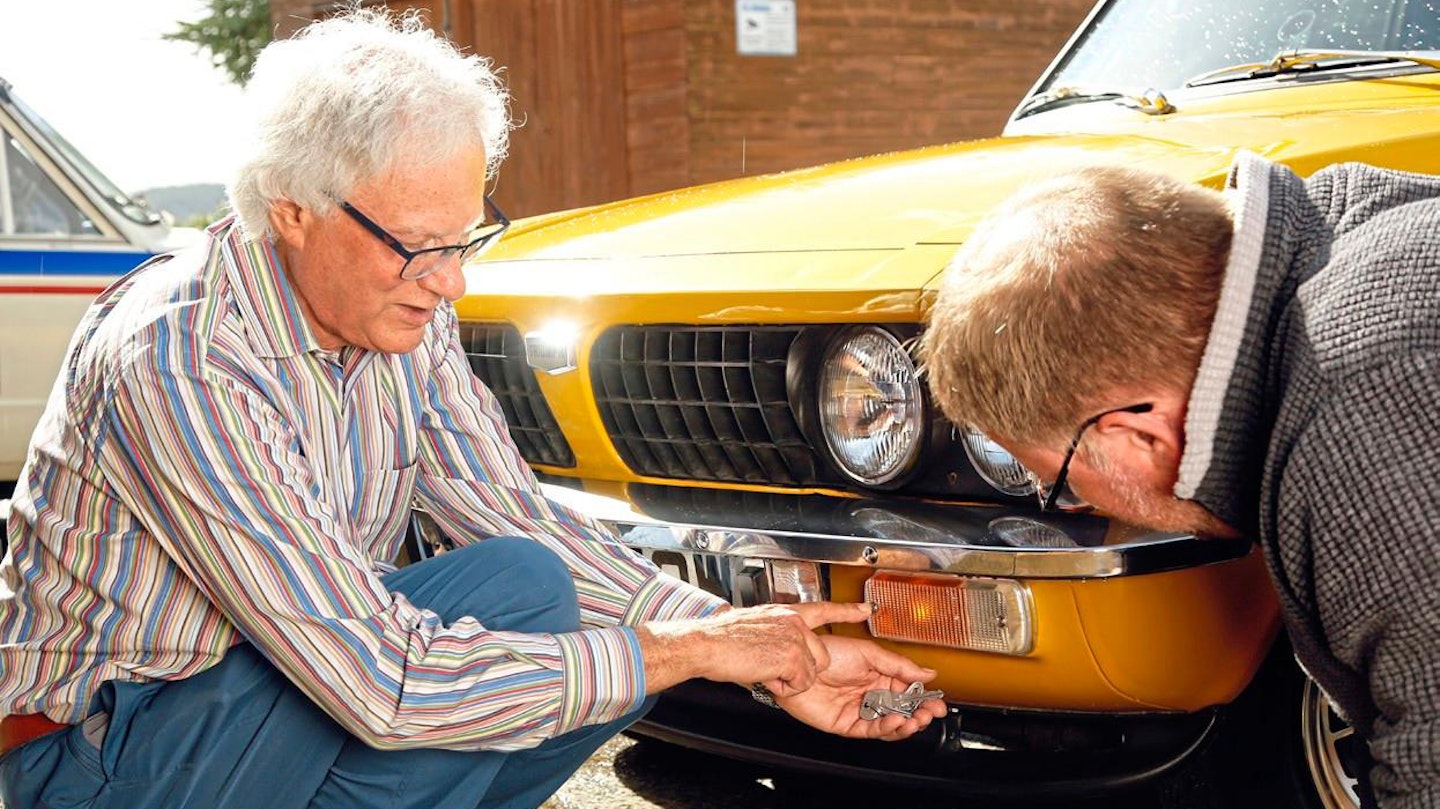
Keys hidden behind light cover for in period car theft
‘When I bought my Sprint, I never thought I'd be 72 and still own it’
Still highly original, over the following years a few things on this Sprint began to wear out. Up to then, the biggest job had undertaken had been a top end engine overhaul in 2016. ‘The valve guide oil seals had hardened and worn, so I took the head off, cleaned everything, did a mild valve grind, put in new valve guide oil seals and gaskets, and reshimmed the valves.’ The original Triplex 10-20 windscreen had begun to delaminate to the stage that, by 2018, Rob had convinced himself it wasn’t going to pass another MoT.
With Veronica’s help, a replacement was fitted. ‘I managed to get another laminated screen, not a 10-20: they were just unobtainable. We popped the screen out and I was shocked to find a bolt between the windscreen rubber and the bottom of the screen itself, between the rubber and the scuttle panel. There was a certain amount of rust there, but fortunately it wasn’t serious, so I was able to clean it up and repaint it.
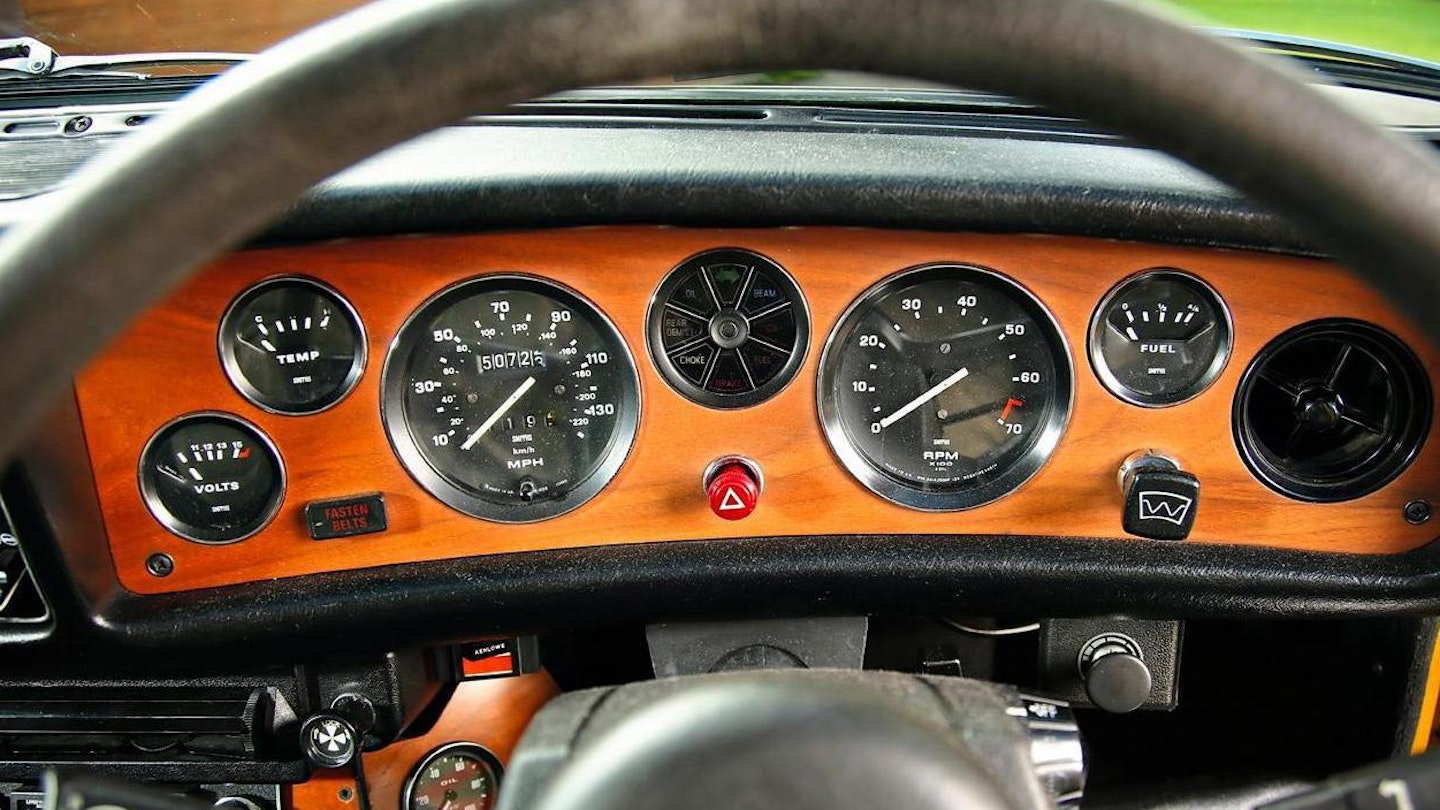
Miles of smiles: Sprint given lots of fun over genuine 50k distance
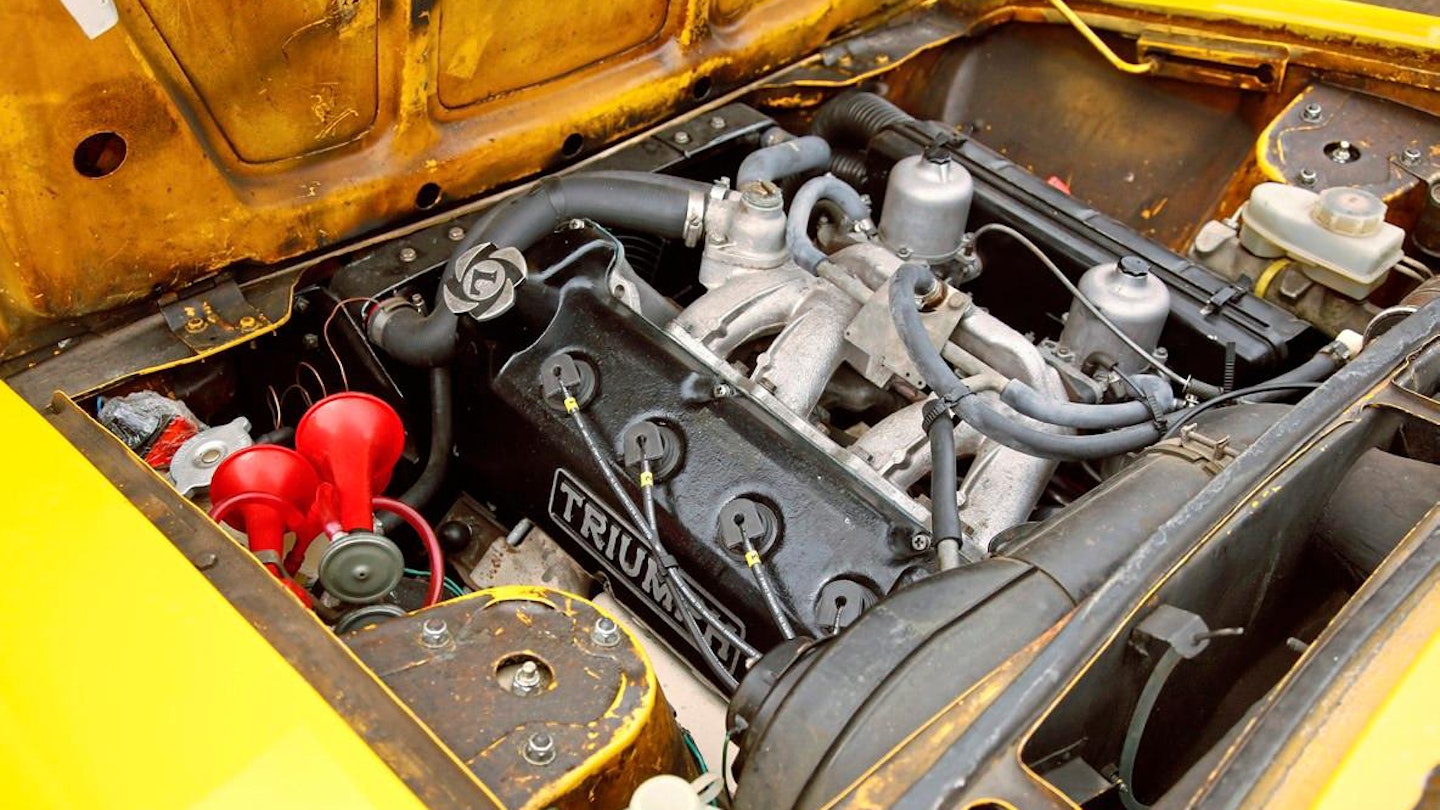
Four cylinders and single camshaft, but 16 valves
Then we put the new windscreen in, which was a hell of a job because we had to hold it up while we were getting it in. Otherwise, because with the added thickness of the vinyl roof and gravity, the windscreen tended to slide down.
‘I assumed the difficulty fitting the new glass was because this was an aftermarket windscreen, although it had the correct Sundym tint on it, it may have been a little bit too small. I found out years later the problem wasn't the windscreen, it was the bodyshell.’ While in his care, Rob has displayed the Sprint with the Triumph Dolomite Club – and got to know former fitters from the Canley factory. Their comments revealed an uncertain and risky state of affairs at the works, as well as the ingenious methods used to build Dolomites in period.
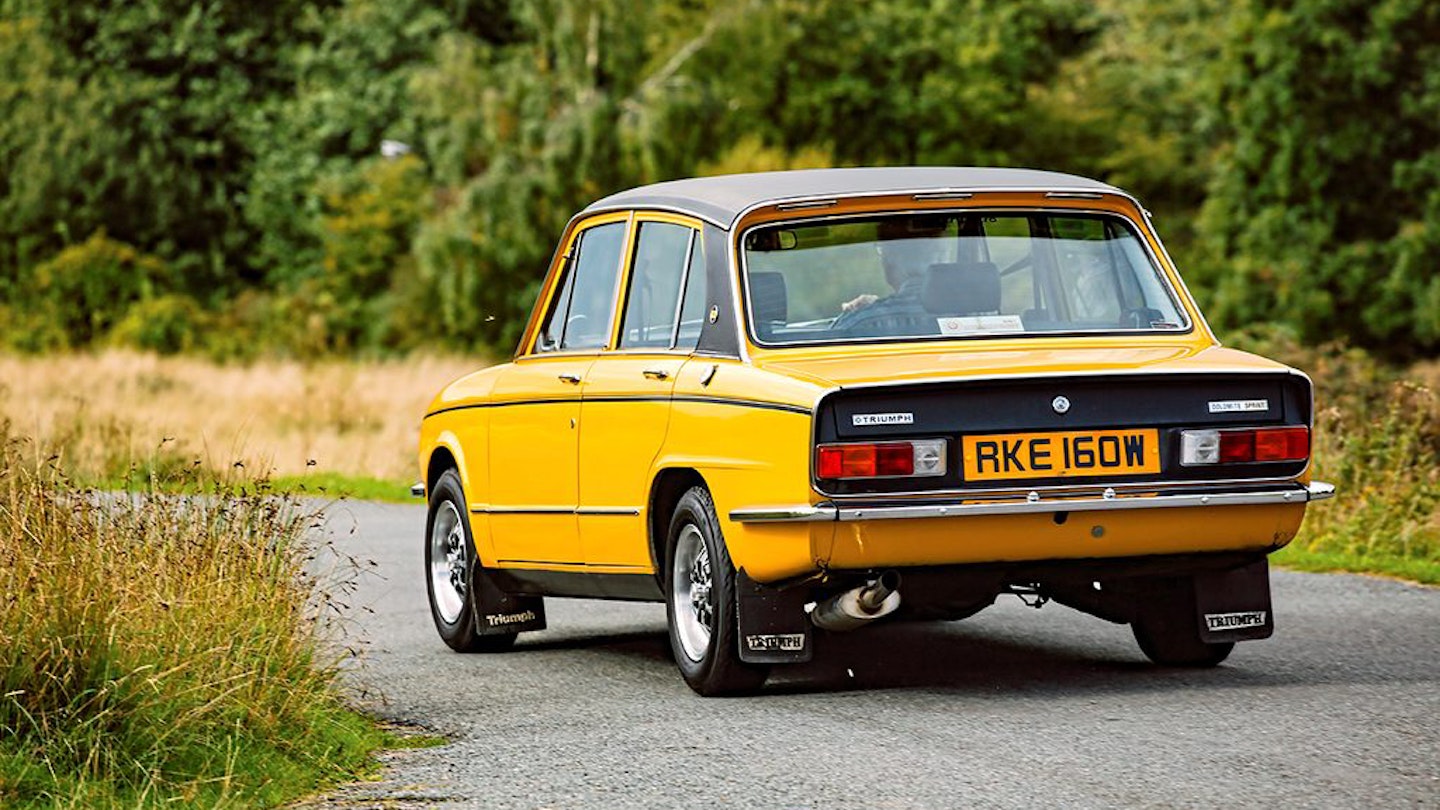
Sprint notable by black ‘simulated leather’ roof and body coachlines
‘A guy from Canley came to the club stand and said, “I used to build those.” And his comments were unrepeatable. But I said to him, “Do you know anything about these windscreen issues?” and told him about bolt between the rubber and the scuttle. He said, “Oh, yeah, we had a metal rod to hand when we fitted the windscreens. And if the rod went in the aperture, we knew we'd got a large windscreen aperture. If we didn't put a bolt underneath the windscreen to hold it physically up in the aperture, the rubbers at the top would fall off the vinyl roof further down the line, and we'd have to refit the windscreen. We put a bolt in there to simply hold it.”
‘He added that, sometimes, it wasn’t always a bolt, it might be a nut or any old thing they could find, anything to hold the windscreen up to stop it sliding down when they put it in the car. They never expected it to ever be seen or last that long. Although there was a bit of repair needed on my car, it hadn’t gone through – the reason the windscreen had delaminated was that it caused a pressure point. from that point. Otherwise, it was fine – it just shows the quality of a Triplex windscreen.’
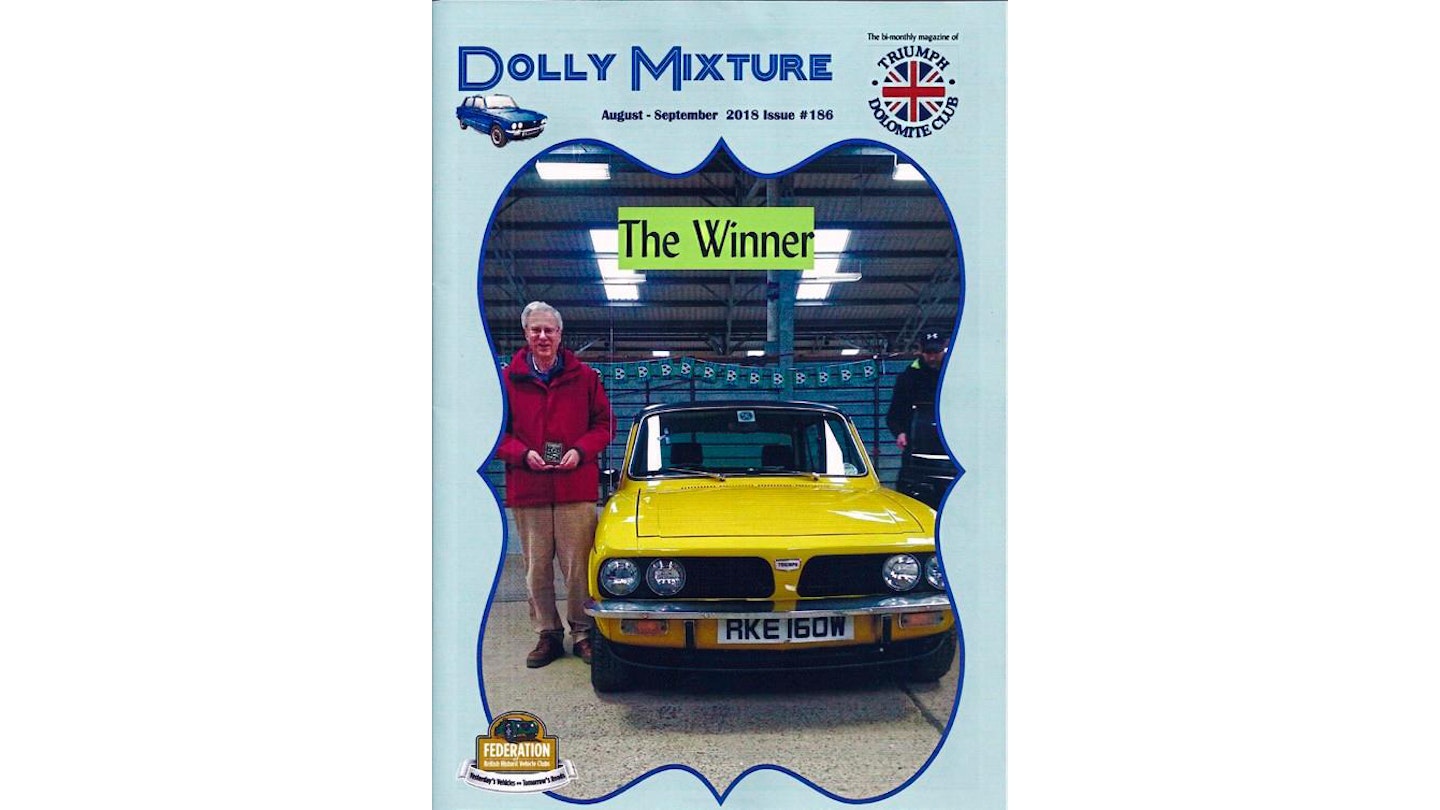
2018 Celebrating Three Counties Showground win
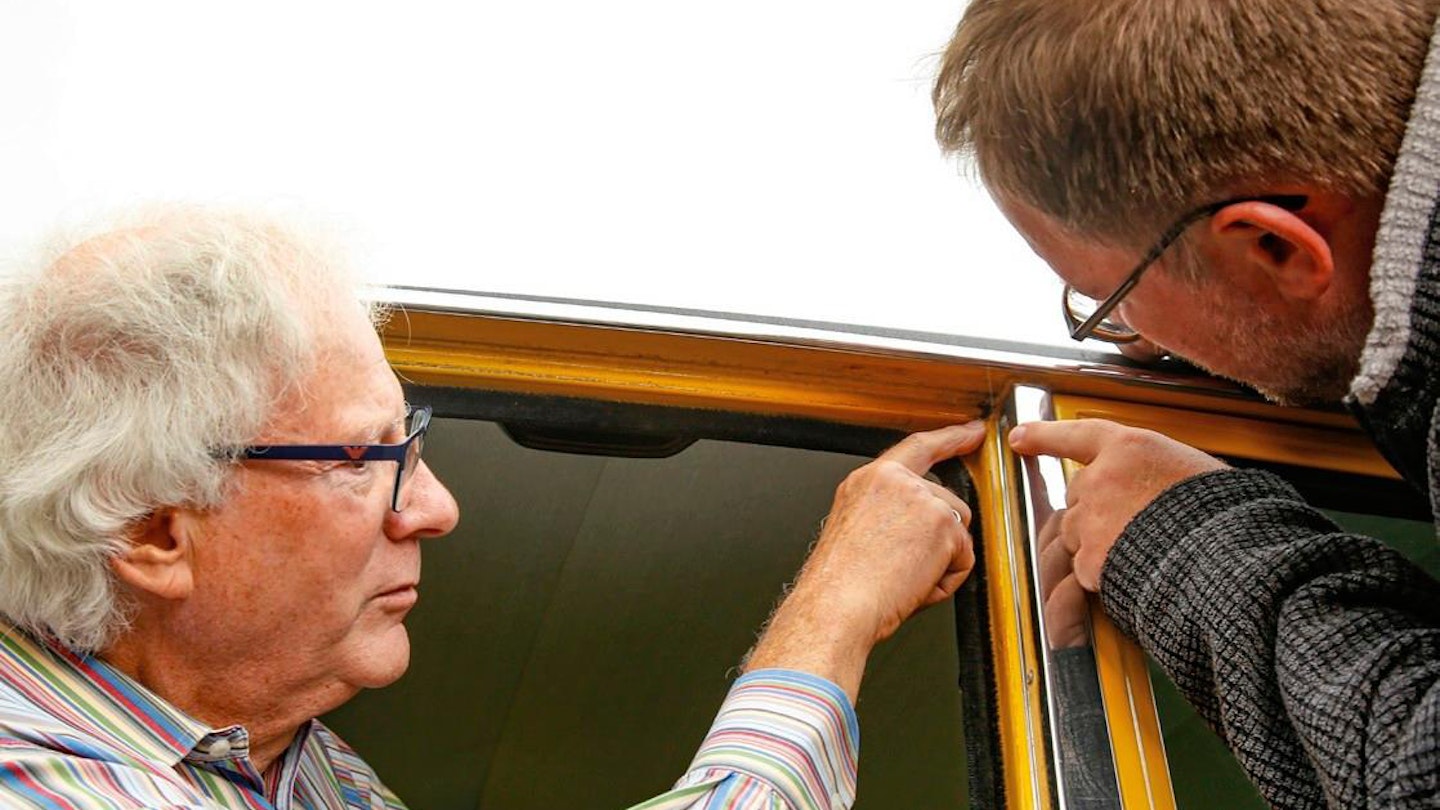
Lack of top B-pillar weld rectified later
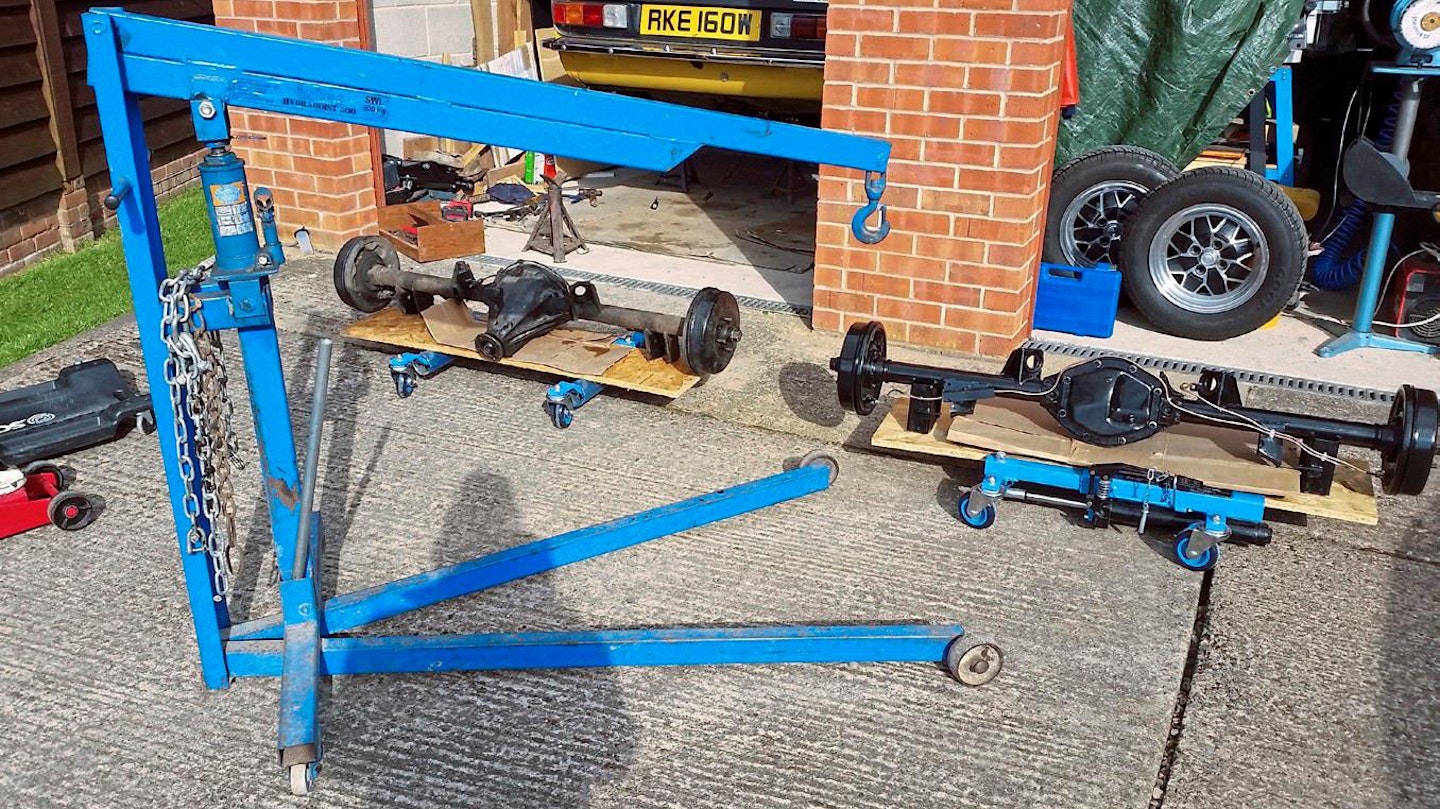
2021 Blackline axle replaces Salisbury LSD
More show visits beckoned, with Rob’s Sprint appearing as a finalist on the Lancaster Insurance Pride of Ownership stand at the 2018 Classic Motor Show. Earlier that year, a stunned Rob collected a ‘1980s Vehicles’ category concours prize at the Three Counties Showground, beating a Ford Sierra Cosworth that had been the subject of a £50,000 restoration. ‘The guy with the Sierra assumed, as I'd got the Sprint, he must have won. Then he was announced as second place. He wasn’t happy.’
Nestled among Rob’s other cars, including a righthand-drive Iso Lele, a restomodded Chevrolet Bel Air and a Riley RM restoration project, the Dolomite is staying put. Caffyn’s original Ziebart has lasted well, bolstered by Rob’s two later Waxoyl applications.
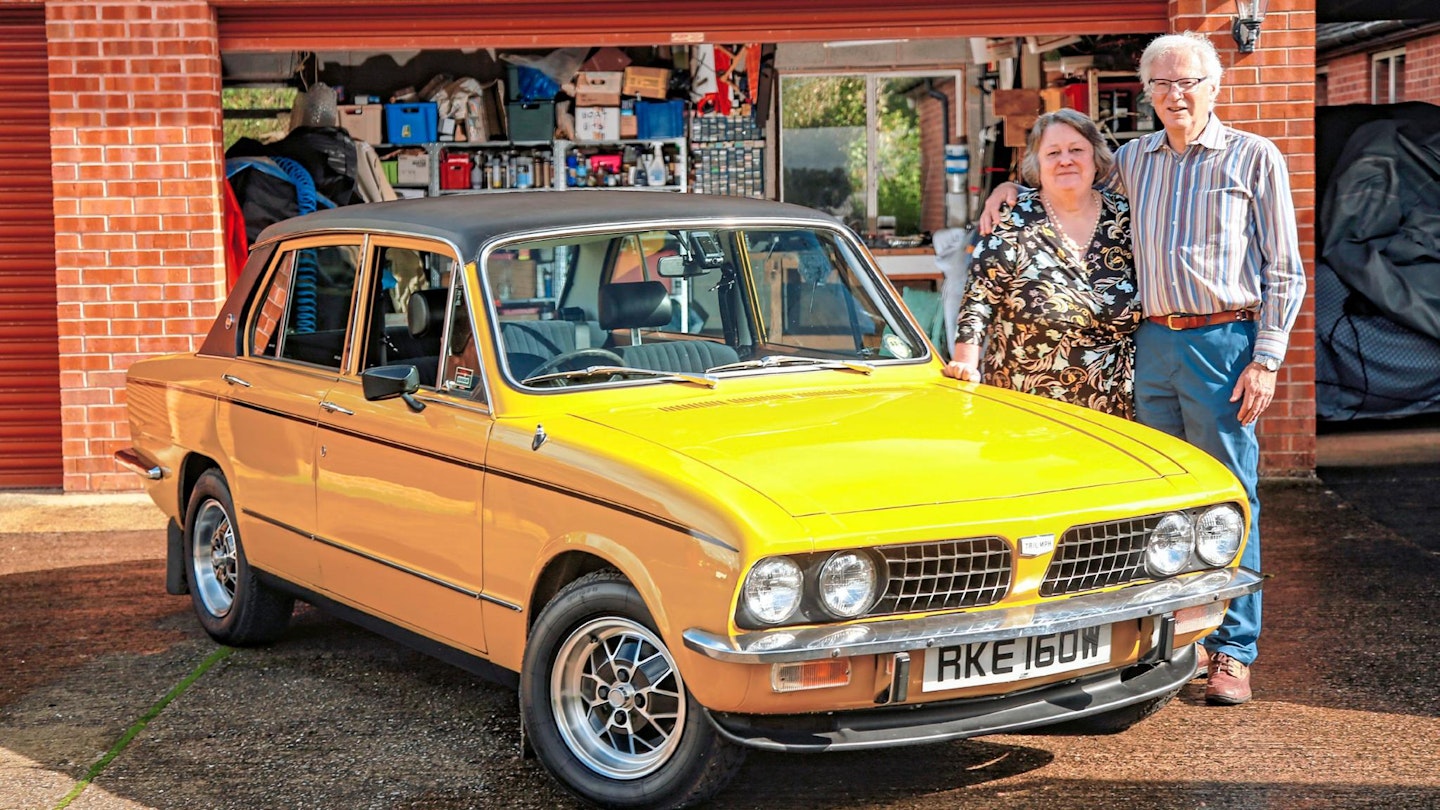
Very little Dolly drama for Rob and Veronica over past 50 years
‘When I bought my Sprint, I never thought I'd be 72 and still own it. Or that all this would have happened to us. It's never let us down or failed to get us where we're going to. Never. There's been very little drama with the Triumph because it's been so good.
‘I doubt that I’ll ever sell it. Some people have asked what my favourite car is out of all the ones that I own; the answer is that I don't really have a favourite, but if I could only keep one it would be the Triumph. I've had it for so long, it’s part of the family.’
Know your classic’s previous owners?
Let us know at classic.cars@bauermedia.co.uk and it might make for one of our features
Subscribe to Classic Cars today. Choose a Print+ Subscription and you'll get instant digital access and so much more. PLUS FREE UK delivery.
